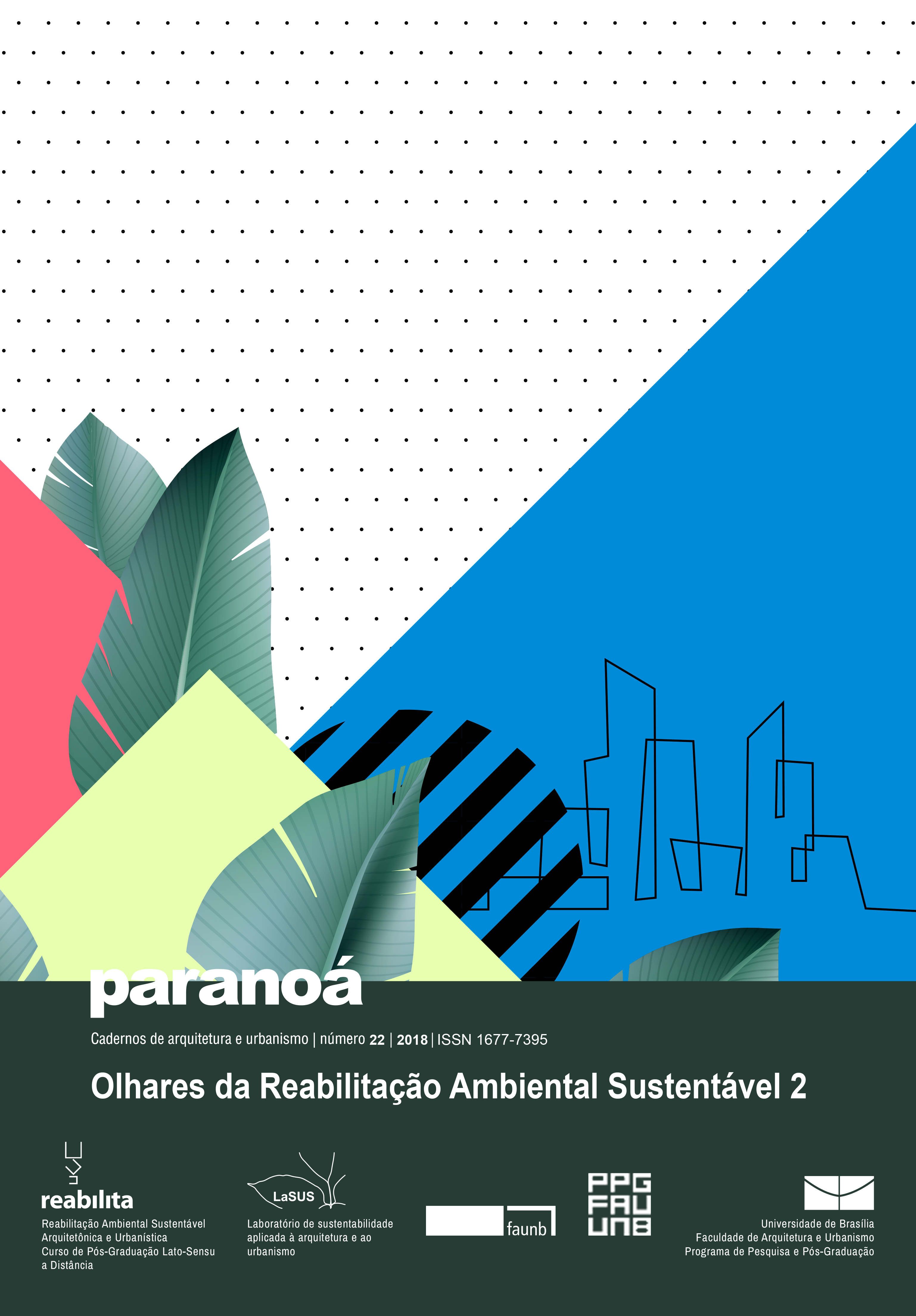Caminhos cicláveis: Conforto térmico como fator de melhoria do uso das ciclovias de Vilhena, RO
DOI:
https://doi.org/10.18830/issn.1679-0944.n22.2018.09Keywords:
urban mobility, bicycle path, afforest, temperatureAbstract
In Brazil, urban sprawl and lack of city planning promoted the use of private automobiles, raising air pollution and soil occupation. In this context, the use of a bicycle appears as an alternative with lower energy expenditure, impact on the atmosphere and on traffic. The fostering of thermal comfort in public space can become an incentive for the use of bicycle paths. This study aimed to evaluate the thermal comfort on bicycle paths in the city of Vilhena-RO, estimating the influence of this aspect in the use of a bicycle as a mean of transportation. Therefore, were analyzed the surface materials and the shading conditions found on different sections of bicycle paths in the city, identifying the materials physical characteristics and their surface temperature. Complementarily, was applied questionnaires for bicycle paths users aiming to estimate the impact on thermal comfort conditions on bicycle use. As results, it was found that the infrastructure of the city’s cycling network is not adequate and the heat is a factor that difficult the bicycle use. The shaded areas are considerably less hot than the exposed areas. Vilhena’s city planning should be integrated, contemplating a wider cycling network and urban afforestation.
Downloads
Downloads
Published
How to Cite
Issue
Section
License
Autores que publicam nesta revista concordam com os seguintes termos:
- Autores mantém os direitos autorais e concedem à revista o direito de primeira publicação, com o trabalho simultaneamente licenciado sob a Licença Creative Commons Attribution que permite o compartilhamento do trabalho com reconhecimento da autoria e publicação inicial nesta revista. http://creativecommons.org/licenses/by/4.0
- Autores têm autorização para assumir contratos adicionais separadamente, para distribuição não-exclusiva da versão do trabalho publicada nesta revista (ex.: publicar em repositório institucional ou como capítulo de livro), com reconhecimento de autoria e publicação inicial nesta revista.
- Autores têm permissão e são estimulados a publicar e distribuir seu trabalho online (ex.: em repositórios institucionais ou na sua página pessoal) a qualquer ponto antes ou durante o processo editorial, já que isso pode gerar alterações produtivas, bem como aumentar o impacto e a citação do trabalho publicado (Veja O Efeito do Acesso Livre).















